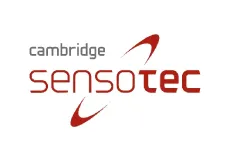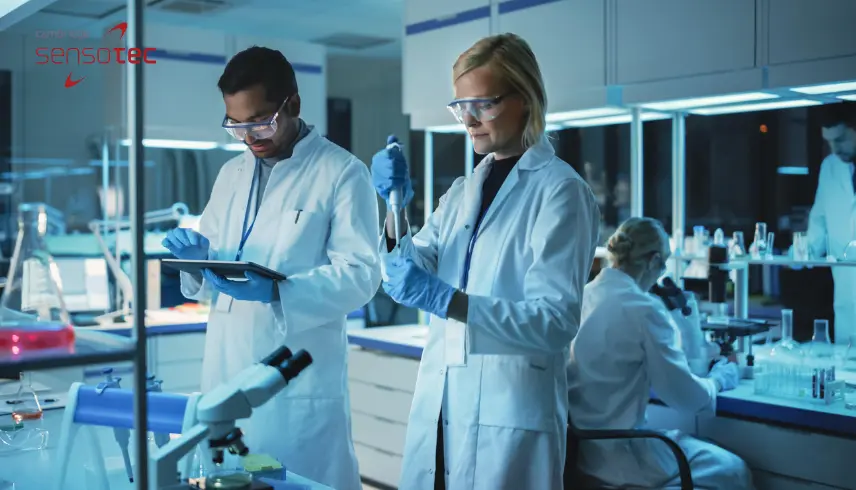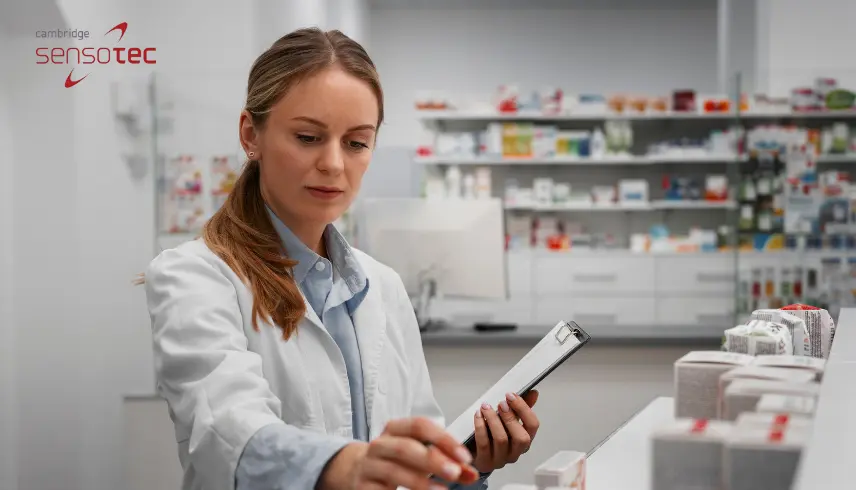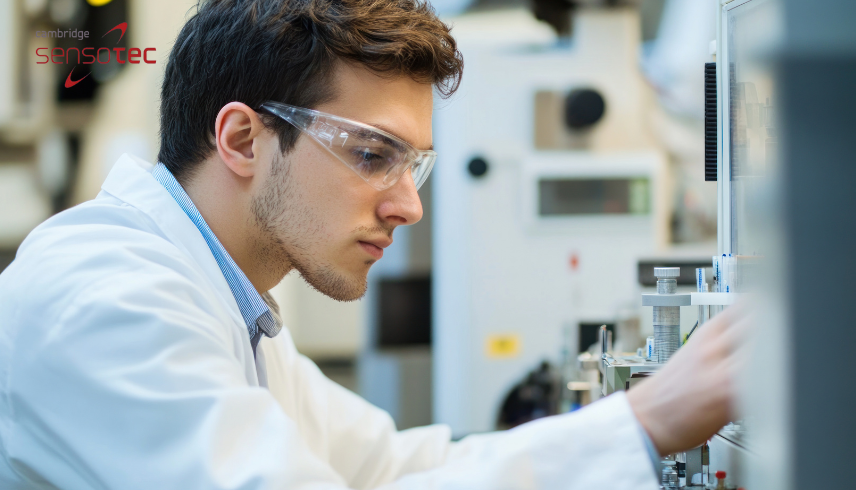
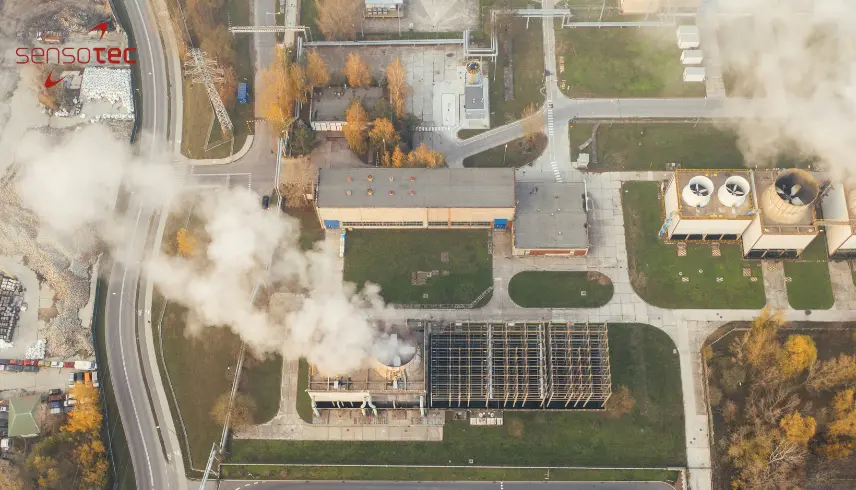
Choosing the Right Carbon Monoxide Measuring Instrument
Introduction
Carbon monoxide (CO) is a colourless, odourless gas that can be extremely dangerous when present in high concentrations. Accurate measurement of carbon monoxide is critical in industries such as manufacturing, energy production, and laboratories where the gas is often a by-product. The right carbon monoxide measuring equipment can prevent hazardous conditions, protect workers, and ensure compliance with safety regulations.
This article will explore the key factors to consider when selecting a carbon monoxide measuring instrument, highlight the features of Cambridge Sensotec’s Rapidox 1100-B CO analyser, and provide practical advice for choosing the best device for your specific application.
Options For Carbon Monoxide Measuring Equipment
What is Carbon Monoxide (CO)?
Carbon monoxide is a toxic gas produced through the incomplete combustion of carbon-containing fuels such as coal, oil, and natural gas. Due to its dangerous nature, industries must closely monitor CO levels to avoid exposure that could cause illness or even death.
Why Measure Carbon Monoxide Levels?
Measuring carbon monoxide levels is essential for preventing harmful exposure, particularly in confined or poorly ventilated spaces. CO detectors and analysers are vital in identifying unsafe concentrations, ensuring operational safety, and safeguarding employees in industrial and commercial environments.
Risks of CO in Various Industries
Industries such as steel production, power generation, chemical manufacturing, and automotive sectors frequently encounter carbon monoxide. In these environments, unmonitored CO can lead to explosions, fires, or poisoning. Therefore, precise carbon monoxide measurement equipment is necessary to mitigate these risks.
Key Features of Carbon Monoxide Measuring Instruments
When selecting carbon monoxide measuring equipment, understanding the different sensor technologies is crucial. Each type has unique advantages and limitations depending on the environment and required precision.
Types of CO Measuring Instruments
Infrared (IR) Sensors
Infrared (IR) sensors are one of the most widely used technologies for measuring carbon monoxide. They work by detecting the amount of infrared light absorbed by CO molecules as they pass through a gas sample. IR sensors are highly effective for detecting gases such as carbon monoxide, carbon dioxide, and methane, especially at higher concentrations.
Benefits of IR Technology for CO Measurement
The primary advantage of infrared sensors is their speed and accuracy. They are capable of detecting carbon monoxide in a wide range, from 0-3% up to 0-100%. This makes them suitable for various industrial applications, including environments with flammable gases and volatile organic compounds (VOCs).
IR Sensor Suitability for Different Industrial Gases
IR sensors are ideal for environments containing gases that absorb infrared light, such as carbon dioxide, carbon monoxide, and methane. Their ability to detect gases at varying concentration levels makes them highly versatile, especially in aggressive industrial settings.
Electrochemical Sensors
Electrochemical sensors work by converting the gas concentration into an electrical signal. When CO comes into contact with the sensor, a chemical reaction occurs, producing a current that is proportional to the gas concentration.
How Electrochemical Sensors Work
These sensors are commonly used for lower concentration CO detection. They are effective in portable detectors, as they require minimal power and can provide accurate readings at low ppm (parts per million) levels.
Advantages and Limitations
While electrochemical sensors offer precise readings at low concentrations, they are not suitable for detecting higher CO levels or for use in extreme industrial environments. Additionally, their lifespan is generally shorter than that of IR sensors.
Semiconductor Sensors
Semiconductor sensors detect carbon monoxide by measuring the changes in electrical conductivity caused by the gas interacting with a semiconductor material.
Operation and Typical Applications
These sensors are typically in use in smaller, cost-effective devices for domestic or personal use. They provide a practical solution for monitoring carbon monoxide in residential or commercial spaces but are less common in industrial settings due to their limitations in accuracy and range.
Comparative Advantages
Semiconductor sensors are inexpensive and suitable for non-industrial applications. However, they do not offer the same level of precision or durability as infrared or electrochemical sensors.
Choosing the Right Sensor for Your Application
- Measuring Range: One of the most important factors in selecting a CO measuring instrument is ensuring it can cover the required concentration range. For industrial applications, selecting the correct sensor range, from 0-3% to 0-100%, is crucial for accurate measurement and safety.
- Environmental Factors: When using CO measuring equipment in industrial environments, the instrument must be suited to the conditions. For example, IR sensors work best in non-condensing environments and require proper filtration to prevent dust and particle interference. Ensuring the equipment can handle flammable gases or contaminants is also critical.
- Application-Specific Considerations: Different industries have unique requirements when it comes to carbon monoxide monitoring. For instance, hydrogen, helium, and argon are often present in environments where CO is produced. The chosen sensor must be compatible with the specific gases in your industrial process to avoid inaccurate readings or damage to the equipment.
Introducing the Rapidox 1100-B: A Cost-Effective CO Gas Analyser
The Rapidox 1100-B from Cambridge Sensotec is one of the most versatile and cost-effective carbon monoxide gas analysers on the market. It features an infrared (IR) gas sensor, designed to provide fast and accurate CO measurements.
Overview of the Rapidox 1100-B
The Rapidox 1100-B is designed for industrial use, making it ideal for harsh environments where high concentrations of CO and other gases are present. It offers a wide measurement range from 0-3% to 0-100% CO, ensuring that it can meet the demands of various applications.
Infrared (IR) Technology in the Rapidox 1100-B
The Rapidox 1100-B’s IR sensor is highly sensitive, providing accurate CO measurements in a wide range of concentrations. The device is particularly effective in environments containing hydrogen, helium, argon, and VOCs, as long as the sample gas is filtered for dust and non-condensing.
The Rapidox 1100-B offers fast response times and reliable accuracy, ensuring that CO levels are detected quickly, allowing for swift intervention if necessary.
Compatibility with Industrial Environments
The device is designed for aggressive industrial applications, where the presence of flammable gases and other contaminants requires robust and precise equipment. The IR sensor’s durability and ability to measure in harsh conditions make it ideal for such settings.
Versatility Across Applications
With the ability to measure in the presence of flammable gases such as hydrogen and helium, the Rapidox 1100-B is well-suited to industries that require versatile gas analysis.
Thanks to its IR sensor technology, the Rapidox 1100-B can measure carbon monoxide in complex gas environments. It ensures accurate readings even in challenging conditions.
Importance of Gas Filtering and Non-condensing Conditions
To ensure the accuracy of measurements, the gas sample must be properly filtered and free from condensation. The Rapidox 1100-B is built to handle these challenges with ease, providing reliable performance over the long term.
Comparison of the Rapidox 1100-B with Other CO Measuring Instruments
- Cost Efficiency: The Rapidox 1100-B offers an excellent balance of performance and cost, making it a cost-effective solution for industries that require accurate and reliable carbon monoxide measurement without breaking the budget.
- Performance in Industrial Settings: Compared to electrochemical and semiconductor sensors, the IR sensor in the Rapidox 1100-B performs exceptionally well in industrial environments. Its ability to measure across a broad range of concentrations and withstand harsh conditions sets it apart.
- Advantages in Multi-Gas Environments: The Rapidox 1100-B is designed to operate effectively in environments containing multiple gases, making it a versatile choice for industries dealing with complex gas mixtures.
Best Practices for Using Carbon Monoxide Measuring Equipment
Calibration and Maintenance
To maintain accurate readings, it is essential to regularly calibrate the measuring equipment. The Rapidox 1100-B’s IR sensor requires minimal maintenance but should still be checked periodically to ensure long-term accuracy.
Calibration ensures that the sensor remains accurate over time. This is particularly true in industrial environments where exposure to high concentrations of CO and other gases can affect performance.
Routine maintenance, such as cleaning and checking for dust build-up, will help extend the lifespan of the sensor and maintain its accuracy.
Safety Protocols for CO Measurement
Ensuring that CO measuring instruments are used safely and correctly is critical in preventing exposure to harmful gas levels.
Always follow manufacturer guidelines for operating the equipment. This includes ensuring that the environment is free from contaminants that could interfere with measurements.
Proper filtration and ventilation can prevent contaminants from affecting the sensor’s performance, ensuring reliable readings in challenging environments.
Summary
Selecting the right carbon monoxide measuring instrument is essential for maintaining safety and compliance in industries where CO exposure is a risk. The Rapidox 1100-B offers an ideal solution. It combines cost-effectiveness with robust IR sensor technology, making it suitable for a wide range of industrial applications. With its fast and accurate performance, it stands out as a versatile and reliable choice for CO measurement.
As carbon monoxide monitoring becomes increasingly important across various industries, choosing the right equipment will help ensure the safety of workers and the efficiency of operations.
